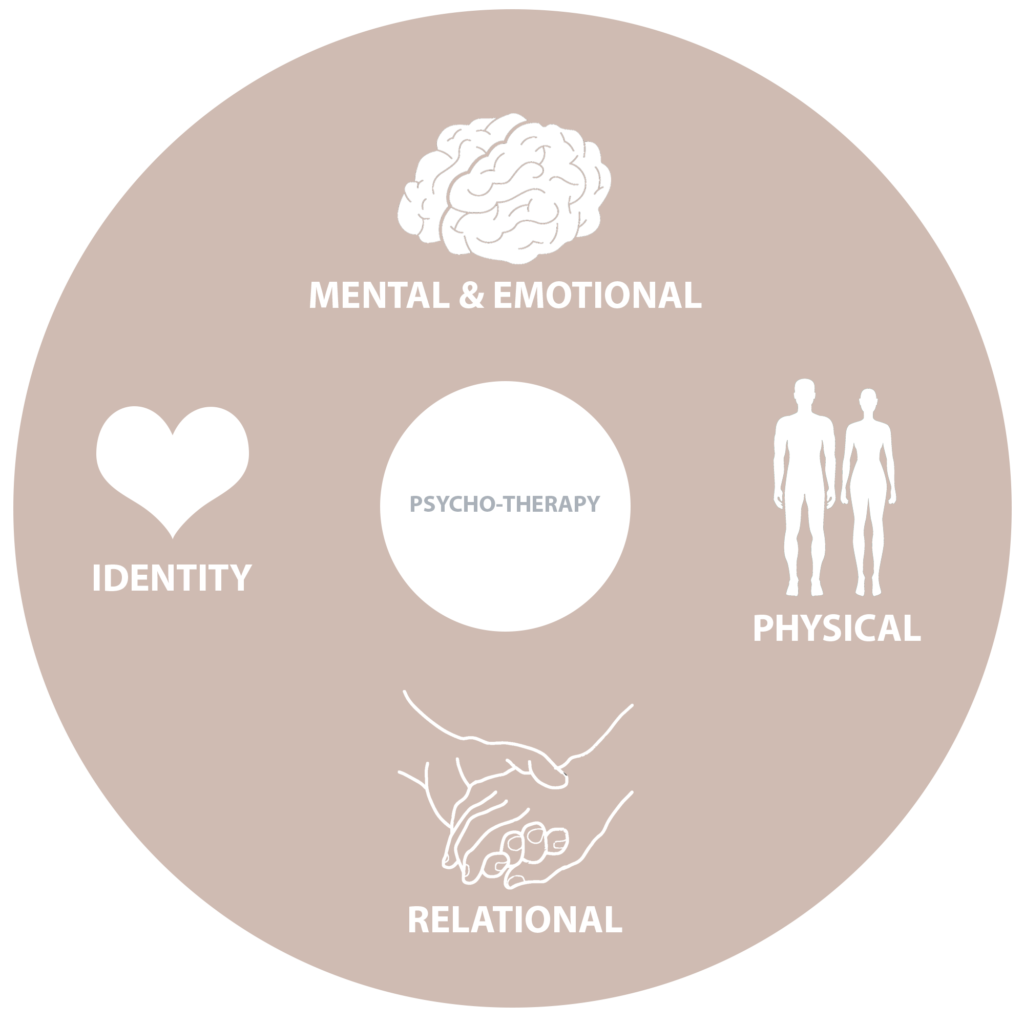How does psycho-therapy work?
We are whole and integrated beings, comprised of various facets – like a cut diamond. We have our physical selves, with bodies that express our states of health and wellbeing. We have mental and emotional selves, influenced by our bodies and yet functioning on different planes of expression. We have our relational selves that engage in the dance of connection with other important people in our lives. And we all have an individual inner relationship – our identity. Psychotherapy offers a way to consider all these aspects of being: first separately and then as an integrated whole.
The art of psychotherapy, supported by the science of biofeedback, and neurofeedback, helps you to discover what already works in your life, and what is keeping you from living your potential for joy, peace, and connection. When you have a greater understanding of the influences of the past and present, it is possible to use this awareness to determine the changes you would like to make, or need to make, toward your preferred future. Psychotherapy, biofeedback and neurofeedback, offer systems of care to support you in maintaining new ways of thinking, relating, and behaving in the world.

Treatment Options
I am trained and very experienced in a number of approaches to individual, couple, family, and group therapy, as well as several complementary care approaches to health (for example, Reiki, as well as the Emotional Freedom Technique). I have never used everything I know for one client, however, I believes it is a comfort to have a good variety of ideas to draw upon in treating each person as a unique individual.
I also work with the best resources in community-based physicians, naturopaths, chiropractors, acupuncturists, nutritionists, and other health care specialists in order to offer resources for my clients’ different cultural, experiential and value-driven needs.
Beginning with Freud, and his form of psychoanalysis, moving on to Aaron Beck and his Cognitive Behaviour Therapy, and evolving toward the post-modern thinking of Michael White/David Epston with Narrative Therapy, and Steve de Shazer/Insoo Kim Berg in Solution-Focused Therapy, psychologists have often relied on a consciously-shaped conversations to facilitate insight-led change in clients. Some individuals grow and even heal long-standing emotional wounds when finally being heard and accurately understood. Embracing their own strengths, courage, and potential via discussions designed to change expectations can be nearly miraculous.
Entering a relaxed state, calming the constant mind chatter, and truly embracing your right to thrive can inspire change. Clinical (not stage) hypnosis is one tool toward this end. I have had hundreds of hours of training and experience in using the power of an individual’s mind to shape and fuel healing.
Other options in hypnosis are based on the work of Michael Newton, in facilitating a guided visualization toward understanding your self as you are now, and as you were meant to be. Further techniques include enhancing identity (self) and agency (power) to incorporate healthy behaviours (mindful eating, smoking cessation, to name but two) and clarity of purpose through hypnosis.
Based on the work of Jon Kabat-Zinn, MBSR advocates being fully present in your life, observing yourself in activities, emotions, relationships, and decision-making. Rather than going about our life on autopilot, guided by your history, outdated values, and old ways of being in the world, Mindfulness offers you real-time options for thinking, feeling, and behaving in new and positive ways. MBSR has been studied over decades of research to be useful for pain management, weight management, stress management, and life enhancement.
Marsha Linehan developed DBT for use with clients who were the least favourite of nearly all care providers: those with a diagnosis of borderline personality disorder. Feeling that the core of the problem was a lack of validation for their very real and painful experiences, DBT incorporates a long list of well-tested skills which include mindfulness, toward the ends of emotional regulation, distress tolerance, and relationship stability. DBT has been studied as useful toward a variety of expanded applications, including mood and anxiety disorders, addiction treatment, cessation of violence, and adopting healthy behaviours.
Developed by Francine Shapiro for use in the treatment of Vietnam War-era veterans, this technique has been test over decades of use for individuals and groups recovering from the effects of traumatic stress, grief, and chronic pain. The main focus of this healing system is to elicit bilateral (two hemisphere) brain participation in reconceptualising events and problems.
Tapas Fleming developed TAT in conjunction with her consultations with healing masters in China, and through drawing upon her own long career as an acupressure(/acupuncture) practitioner in the US. No needles are used in this technique. Ms. Fleming uses constructs from energy medicine to reduce negative effects of emotional, mental, physical, and relational problems, and to inspire a connection to your untapped potential.
Using the science of mind/body medicine, these therapies can track and train variabilities in your heart rate, your ability to relax, concentrate, be safe while vulnerable, and even reach your peak performance under situations of significant stress.
I am a life-long learner and, as such, am very frequently expanding my skills and understandings via classes, conferences, and supervision with experts in related but complementary fields in order to offer more targeted, effective, and helpful therapies to my clients.
